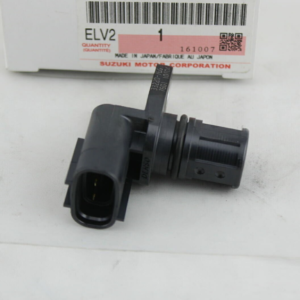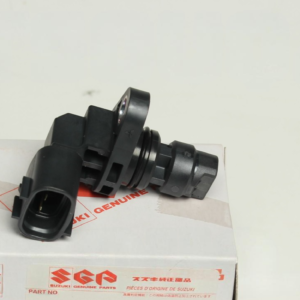**Coolant Temperature Sensor: The Guardian of Engine Health**
In the intricate dance of automotive engineering, where heat and power intertwine, one unsung hero quietly ensures optimal engine performance—the coolant temperature sensor. While engines are celebrated for their power and efficiency, coolant temperature sensors play a pivotal role in maintaining the delicate balance of engine temperature. Join us as we explore the significance, functionality, and importance of coolant temperature sensors in the realm of automotive technology.
**Understanding the Essence: What is a Coolant Temperature Sensor?**
A coolant temperature sensor is a vital component of a vehicle’s engine management system, responsible for monitoring the temperature of the engine coolant. Located within the engine block or cylinder head, the coolant temperature sensor continuously measures the temperature of the coolant and provides crucial data to the engine control unit (ECU) or powertrain control module (PCM).
**The Evolution of Engine Cooling**
In the early days of automotive engineering, engine cooling relied primarily on natural airflow and rudimentary cooling systems. However, as engines became more powerful and efficient, the need for more effective cooling solutions became apparent. Coolant temperature sensors emerged as a transformative technology, enabling vehicles to maintain optimal operating temperatures and prevent overheating, even under extreme conditions.
**The Significance of Temperature Regulation**
In the dynamic environment of modern driving, where engine temperatures can fluctuate rapidly, maintaining proper temperature regulation is crucial for engine performance and longevity. Coolant temperature sensors play a pivotal role in this regard, providing real-time data on engine temperature to the ECU or PCM, which uses this information to adjust fuel delivery, ignition timing, and other parameters to optimize engine performance and efficiency.
**The Silent Workhorse: How Does a Coolant Temperature Sensor Work?**
Despite its unassuming appearance, the coolant temperature sensor employs sophisticated technology to fulfill its role effectively. Most coolant temperature sensors utilize a thermistor—a type of resistor whose electrical resistance changes with temperature—to measure coolant temperature. As the temperature of the coolant changes, the resistance of the thermistor changes accordingly, allowing the sensor to provide accurate temperature readings to the ECU or PCM.
**The Unseen Benefits: Advantages of Coolant Temperature Sensors**
While coolant temperature sensors may operate quietly behind the scenes, their impact on engine performance and reliability is undeniable. Here are some key advantages of coolant temperature sensors:
1. **Prevent Overheating:** By continuously monitoring engine temperature, coolant temperature sensors help prevent overheating, which can lead to engine damage and costly repairs.
2. **Optimize Performance:** Coolant temperature sensors allow the ECU or PCM to adjust engine parameters such as fuel delivery and ignition timing to optimize performance and efficiency under all driving conditions.
3. **Extend Engine Lifespan:** By ensuring that the engine operates within its optimal temperature range, coolant temperature sensors help minimize wear and prolong the lifespan of engine components, such as piston rings and bearings.
4. **Enhance Diagnostics:** Coolant temperature sensors play a crucial role in onboard diagnostics, allowing technicians to quickly identify and address cooling system faults and issues related to engine temperature.
**Looking Ahead: The Future of Cooling Technology**
As automotive technology continues to advance, so too will the field of cooling technology. Innovations in coolant temperature sensor design, materials, and efficiency may lead to even more reliable and efficient cooling solutions in the future. Furthermore, as vehicles transition towards electrification and autonomous driving, coolant temperature sensors will play a crucial role in optimizing thermal management and ensuring the efficient operation of next-generation vehicles.
**In Conclusion: The Guardian of Engine Health**
In the dynamic landscape of automotive engineering, where precision and reliability are paramount, coolant temperature sensors emerge as silent but indispensable guardians of engine temperature. Their unassuming presence belies their critical importance in ensuring smooth operation, optimal performance, and maximum efficiency of modern vehicles. So, the next time you hit the road and feel the engine purr with vitality, remember to thank the unsung hero working diligently behind the scenes—the coolant temperature sensor.
In stock (can be backordered)
$12,851.68
**Coolant Temperature Sensor: The Guardian of Engine Health**
In the intricate dance of automotive engineering, where heat and power intertwine, one unsung hero quietly ensures optimal engine performance—the coolant temperature sensor. While engines are celebrated for their power and efficiency, coolant temperature sensors play a pivotal role in maintaining the delicate balance of engine temperature. Join us as we explore the significance, functionality, and importance of coolant temperature sensors in the realm of automotive technology.
**Understanding the Essence: What is a Coolant Temperature Sensor?**
A coolant temperature sensor is a vital component of a vehicle’s engine management system, responsible for monitoring the temperature of the engine coolant. Located within the engine block or cylinder head, the coolant temperature sensor continuously measures the temperature of the coolant and provides crucial data to the engine control unit (ECU) or powertrain control module (PCM).
**The Evolution of Engine Cooling**
In the early days of automotive engineering, engine cooling relied primarily on natural airflow and rudimentary cooling systems. However, as engines became more powerful and efficient, the need for more effective cooling solutions became apparent. Coolant temperature sensors emerged as a transformative technology, enabling vehicles to maintain optimal operating temperatures and prevent overheating, even under extreme conditions.
**The Significance of Temperature Regulation**
In the dynamic environment of modern driving, where engine temperatures can fluctuate rapidly, maintaining proper temperature regulation is crucial for engine performance and longevity. Coolant temperature sensors play a pivotal role in this regard, providing real-time data on engine temperature to the ECU or PCM, which uses this information to adjust fuel delivery, ignition timing, and other parameters to optimize engine performance and efficiency.
**The Silent Workhorse: How Does a Coolant Temperature Sensor Work?**
Despite its unassuming appearance, the coolant temperature sensor employs sophisticated technology to fulfill its role effectively. Most coolant temperature sensors utilize a thermistor—a type of resistor whose electrical resistance changes with temperature—to measure coolant temperature. As the temperature of the coolant changes, the resistance of the thermistor changes accordingly, allowing the sensor to provide accurate temperature readings to the ECU or PCM.
**The Unseen Benefits: Advantages of Coolant Temperature Sensors**
While coolant temperature sensors may operate quietly behind the scenes, their impact on engine performance and reliability is undeniable. Here are some key advantages of coolant temperature sensors:
1. **Prevent Overheating:** By continuously monitoring engine temperature, coolant temperature sensors help prevent overheating, which can lead to engine damage and costly repairs.
2. **Optimize Performance:** Coolant temperature sensors allow the ECU or PCM to adjust engine parameters such as fuel delivery and ignition timing to optimize performance and efficiency under all driving conditions.
3. **Extend Engine Lifespan:** By ensuring that the engine operates within its optimal temperature range, coolant temperature sensors help minimize wear and prolong the lifespan of engine components, such as piston rings and bearings.
4. **Enhance Diagnostics:** Coolant temperature sensors play a crucial role in onboard diagnostics, allowing technicians to quickly identify and address cooling system faults and issues related to engine temperature.
**Looking Ahead: The Future of Cooling Technology**
As automotive technology continues to advance, so too will the field of cooling technology. Innovations in coolant temperature sensor design, materials, and efficiency may lead to even more reliable and efficient cooling solutions in the future. Furthermore, as vehicles transition towards electrification and autonomous driving, coolant temperature sensors will play a crucial role in optimizing thermal management and ensuring the efficient operation of next-generation vehicles.
**In Conclusion: The Guardian of Engine Health**
In the dynamic landscape of automotive engineering, where precision and reliability are paramount, coolant temperature sensors emerge as silent but indispensable guardians of engine temperature. Their unassuming presence belies their critical importance in ensuring smooth operation, optimal performance, and maximum efficiency of modern vehicles. So, the next time you hit the road and feel the engine purr with vitality, remember to thank the unsung hero working diligently behind the scenes—the coolant temperature sensor.
| Weight | 0.03 kg |
|---|---|
| Warehouse | Inventory at warehouse 2 |


Get E-mail updates about our latest products and special offers.
Sensors and More is Jamaica’s ultimate online auto parts store. Established in 2020, we specialize in genuine electrical parts for Japanese, Read more…
Reviews
There are no reviews yet.